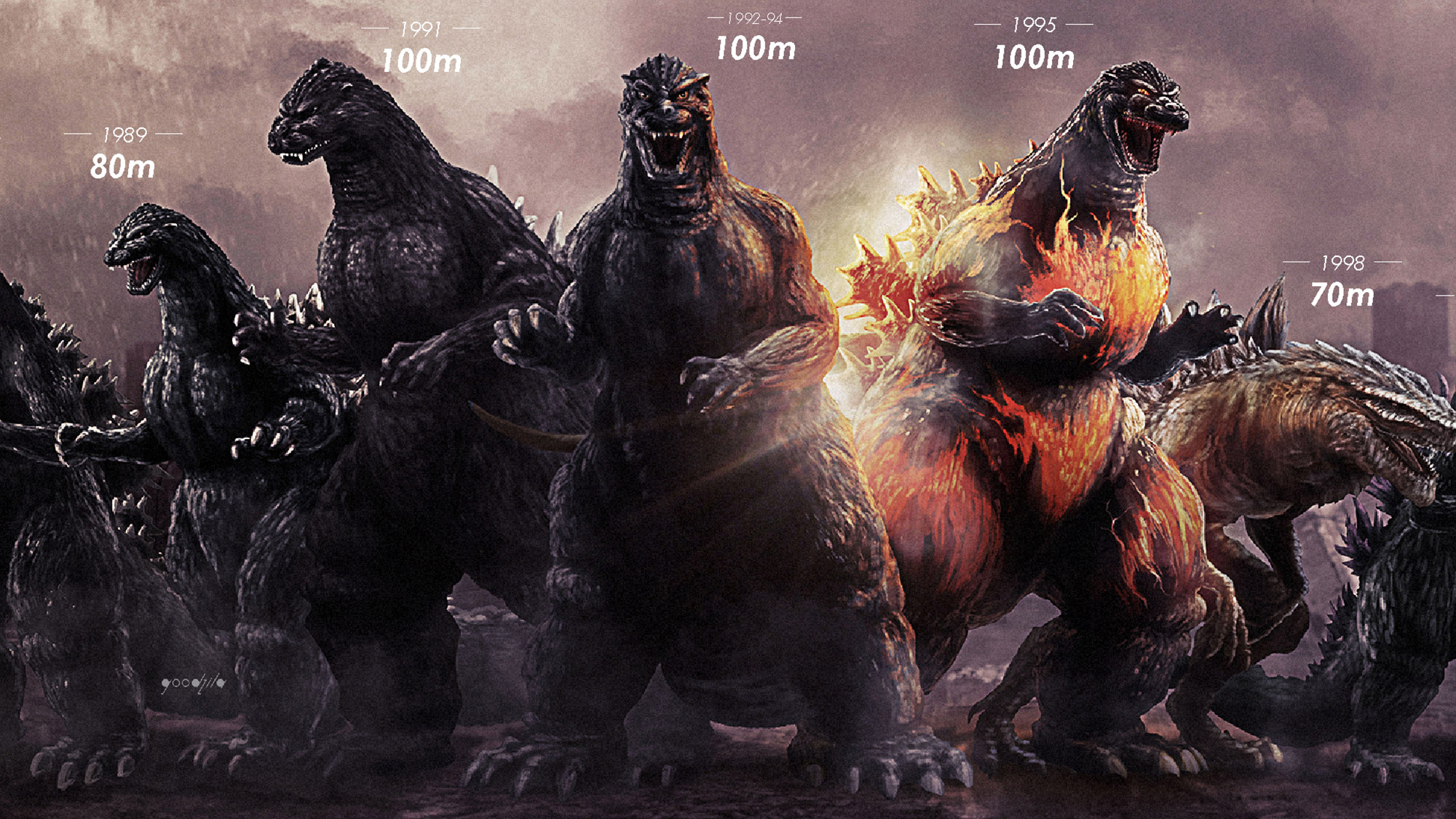Godzilla Grew 30 Times Faster Than Any Organism on Earth. Here's Why.

If Godzilla were a real creature, his incredibly rapid growth spurt on the big screen would be off the charts, even setting evolutionary records, a new report finds.
When the dinosaur-like monster debuted on the silver screen in 1954, he stood a towering 164 feet (50 meters) tall. Now, 35 films later — the latest, "Godzilla: King of the Monsters," came out Friday (May 31) — the behemoth has more than doubled in size, currently reaching 393 feet (120 m) tall. A new analysis of Godzilla's height even revealed that he has evolved 30 times faster than any real organism on Earth, the researchers wrote in the report.
So, what accounts for Godzilla's extreme growth? The researchers ruled out several ideas (more on that later) before landing on the existential dread experienced by humanity: Perhaps society's cultural anxiety has caused Godzilla to muscle up faster than an athlete on steroids, the researchers said. [Bigfoot, Nessie & the Kraken: Cryptozoology Quiz]
"We think cultural anxiety could be this agent of change on this metaphorical movie monster," report lead researcher Nathaniel Dominy, a professor of anthropology at Dartmouth College in New Hampshire, told Live Science.

Before landing on anxiety as an explanation, the researchers entertained, but later dismissed, other ideas. For instance, some movie buffs think that Godzilla is a ceratosaurid, a type of dinosaur that lived during the Jurassic period. But even though these dinosaurs evolved to have huge bodies, Godzilla's growth spurt far outpaces theirs, the researchers said. The monster's growth is also far too rapid to come from genetic drift, that is, when certain gene variants in a small population are randomly lost, diminishing genetic diversity, the researchers said.
Even natural selection, by which organisms with advantageous genes survive and then pass those genes on to their offspring, couldn't explain Godzilla's swift sprouting.
Instead, a look at Godzilla's history explains his accelerated growth, the researchers said. Godzilla was created, in part, because of nuclear-age fears following the use of the first atomic and hydrogen bombs in the 1940s and 1950s. In Godzilla's case, hydrogen-bomb testing decimated his deep-sea ecosystem in the first movie, and Godzilla exacted his revenge by destroying Tokyo.
Sign up for the Live Science daily newsletter now
Get the world’s most fascinating discoveries delivered straight to your inbox.
To test the idea that anxiety fueled Godzilla's growth, the researchers used U.S. military spending as a proxy for the nation's collective anxiety. They found a strong correlation between this spending and Godzilla's body size from 1954 to 2019, which includes measurements from both Japanese and American movies.
Granted, correlation doesn't imply causation. And it is possible that another factor, such as people's appetite for big and scary monsters drove movie makers to grow Godzilla, to ensure box office success.

But if anxiety could explain Godzilla's growth spurt, it's not difficult to see why people are so anxious, said Dominy and co-researcher Ryan Calsbeek, an associate professor of biological sciences at Dartmouth. "Whether reacting to geopolitical instability, a perceived threat from terrorists or simply fear of 'the other,' many democracies are electing nationalist leaders, strengthening borders and bolstering their military presence around the world," the researchers wrote in the report.
Moreover, climate change, which is expected to affect sea-level rise, people's health, and water and food security, can make anxiety top the charts, the researchers said.
"[Godzilla] is this ever-useful metaphor for whatever kinds of existential threat we fear as a collective culture, whether it's nuclear bombs or climate change," Dominy said.
But there is hope, Dominy noted. "Godzilla's near invincibility almost always eventually leads humanity to the realization that they must work together to defeat it (except, of course, when the creature becomes an unlikely ally, but that is another story)," the researchers wrote in the report.
Perhaps society can learn from the Godzilla movies that "now is the time for cooperation — across countries, across disciplines and across party lines," the researchers wrote. "It is our only hope of mitigating the dire existential threats we face today."
The report was published online May 28 in the journal Science.
- Rumor or Reality: The Creatures of Cryptozoology
- Making Monsters: Images of Spooky Special Effects
- Our 10 Favorite Monsters
Originally published on Live Science.

Laura is the archaeology and Life's Little Mysteries editor at Live Science. She also reports on general science, including paleontology. Her work has appeared in The New York Times, Scholastic, Popular Science and Spectrum, a site on autism research. She has won multiple awards from the Society of Professional Journalists and the Washington Newspaper Publishers Association for her reporting at a weekly newspaper near Seattle. Laura holds a bachelor's degree in English literature and psychology from Washington University in St. Louis and a master's degree in science writing from NYU.









